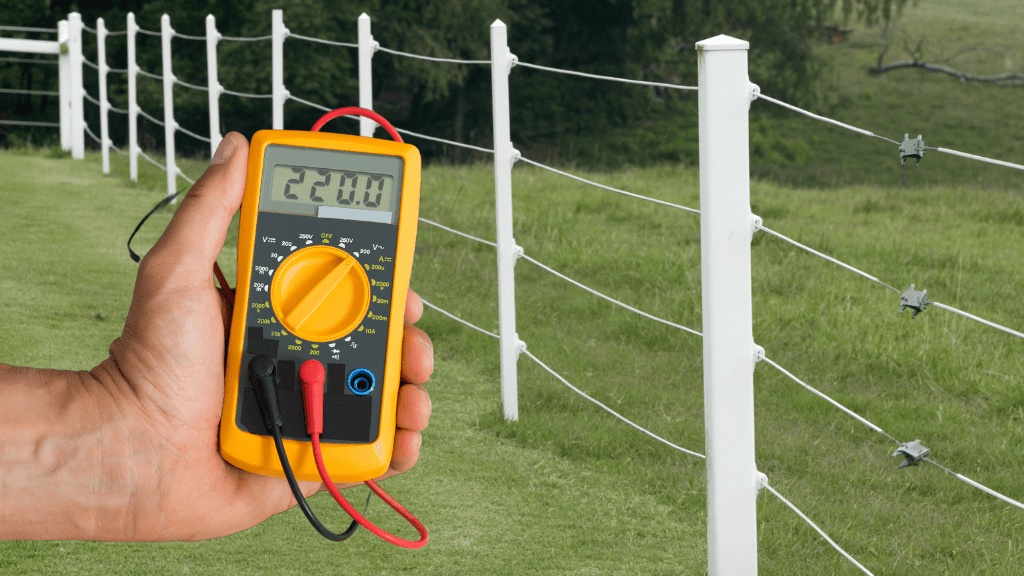Electric fences have become a popular choice for farmers, ranchers, and property owners seeking an effective means of containing livestock and protecting their premises. Test Electric fences provide a safe and economical way to keep animals within boundaries while deterring potential threats. To ensure the fence's functionality, regular testing is essential.
2. Understanding Electric Fences
Before delving into testing methods, it's important to have a basic understanding of how electric fences work. Electric fences consist of a power source, usually an energizer or fence charger, which produces a high-voltage pulse of electricity. This pulse travels along the fence wire, creating a psychological barrier for animals and humans.
3. Importance of Testing Electric Fences
Regular testing of electric fences is crucial to maintain their effectiveness. Faults such as broken wires, loose connections, or insufficient voltage can compromise the fence's ability to contain animals or deter intruders. By conducting routine tests, you can identify any issues and address them promptly, ensuring the fence operates as intended.
4. Common Issues with Electric Fences
Before exploring alternative testing methods, it's important to understand the common problems that can arise with electric fences. These include:
- Broken wires: Wires can break due to extreme weather conditions, animal interference, or physical damage.
- Vegetation interference: Overgrown vegetation can come into contact with the fence wires, causing power leakage or short circuits.
- Loose connections: Connections between wires, insulators, and the energizer can become loose over time, leading to power loss.
- Insulator issues: Faulty or damaged insulators can result in electrical leakage and reduced voltage.
- Inadequate voltage: Insufficient power output from the energizer may result in a weak shock, rendering the fence ineffective.
5. Manual Testing Methods
If you find yourself without a dedicated electric fence tester, there are manual methods you can use to assess the fence's functionality.
a. Visual Inspection
Start by conducting a thorough visual inspection of the fence. Walk along the fence line and check for any visible signs of damage, such as broken wires, loose connections, or vegetation interference. Repair any broken wires and clear vegetation to ensure the fence is unobstructed.
b. Physical Testing
To test the fence's functionality manually, you can use a non-conductive object, such as a blade of grass, to touch the fence wire while standing on the ground. Be cautious and use this method only if you are confident about your safety and are aware of the potential shock.
6. Alternative Testing Methods
While manual testing can provide some insight into the fence's condition, alternative methods can offer more accurate results.
a. Using a Voltmeter
A voltmeter is a versatile tool that can help measure voltage levels in various electrical systems, including electric fences. To test an electric fence with a voltmeter, follow these steps:
- Switch the voltmeter to the appropriate voltage setting.
- Place one probe on the ground and the other probe on the fence wire.
- The voltmeter will display the voltage reading. Ensure it is within the acceptable range for your specific electric fence.
b. Using a Fence Charger Indicator Light
Some electric fence chargers come equipped with an indicator light that provides a visual indication of the charger's output. This light can serve as a basic testing tool. Follow these steps:
- Locate the charger's indicator light, usually found on the charger box.
- Observe the light's intensity or any changes in its behavior. A strong, consistent light indicates proper functioning, while a weak or flickering light may suggest an issue.
c. Using an Electric Fence Tester App
Advancements in technology have led to the development of smartphone applications that can measure electric fence voltage. These apps utilize the phone's electromagnetic field sensor to detect the electric field produced by the fence. While not as accurate as dedicated testers, they can provide a rough estimate of the fence's voltage.
7. Precautions and Safety Measures
When testing an electric fence without a dedicated tester, it's crucial to prioritize safety. Consider the following precautions:
- Always assume the fence is energized and can deliver a shock.
- Avoid touching the fence wire directly unless using a non-conductive object for physical testing.
- Use caution and ensure proper grounding when using a voltmeter or other testing equipment.
- If you suspect a fault or issue with the fence, consult a professional or experienced technician for further assistance.
8. Conclusion
Testing an electric fence regularly is essential to maintain its functionality and ensure the safety of livestock and property. While dedicated electric fence testers are the most reliable option, manual testing methods and alternative approaches can be used when a tester is unavailable.
Remember to conduct visual inspections, perform physical tests cautiously, and consider alternative tools like voltmeters, fence charger indicator lights, or electric fence tester apps. By adopting these methods and taking appropriate safety precautions, you can keep your electric fence in optimal condition.


No comments yet